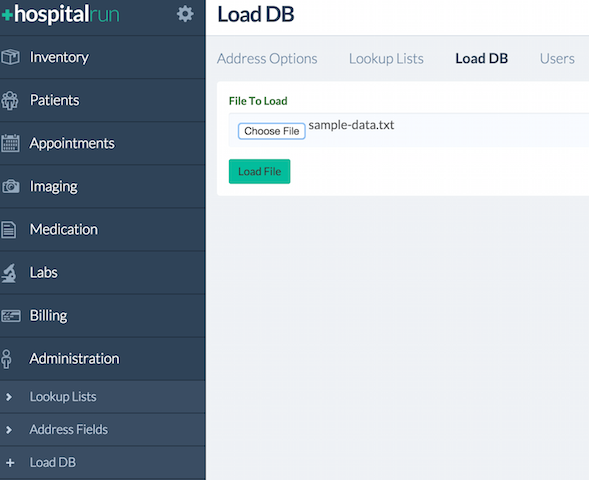Ember frontend for HospitalRun
To run the development environment for this frontend you will need to have Git, Node.js, Ember CLI, Bower and CouchDB installed.
To install the frontend please do the following:
- Make sure you have installed Git
- Make sure you have installed Node.js. Versions after 0.10.0 should work, but please note if you encounter errors using 5.x it may be necessary to upgrade your npm version. Versions after 3.5.x should work:
npm install -g npm
- Install ember-cli latest:
npm install -g ember-cli@latest - Install bower:
npm install -g bower - Clone this repo with
git clone https://github.com/HospitalRun/hospitalrun-frontend, go to the cloned folder and:npm installto install needed node modules.bower installto install needed bower modules.npm install -g phantomjs-prebuiltto install PhantomJS2, which is needed to run tests.
- Install and configure CouchDB
- Download and install CouchDB from http://couchdb.apache.org/#download
- Create admin user:
- If you have just installed CouchDB and have no admin user, please run
./script/initcouch.sh. A userhradminwill be created with password:test. - If you already have a CouchDB admin user, please run
./script/initcouch.sh USER PASSwhereUSERandPASSare the CouchDB admin user credentials.
- If you have just installed CouchDB and have no admin user, please run
- Copy the
server/config-example.jstoserver/config.js.
If you are willing to try using make, ensure you have installed git, node and couchdb (steps 1, 2 and 6 above), you may skip the rest. This requires couchdb in the path to work correctly.
- Run
make serve, it will start couchdb, install npm dependencies and start the server. - Run
make allto run all tests and build the app. - Look into
Makefileto figure other targets available.
To start the frontend please do the following:
- Start the server by running
npm startin the repo folder. - Go to http://localhost:4200/ in a browser and login with username
hradminand passwordtest.
Always make sure to git pull and get the latest from master.
The app will usually tell you when something needs to happen (i.e. if you try to npm start and npm is out of date, it will tell you to run npm update. But If you run into problems you can't resolve, feel free to open an issue, or ask for help in the HospitalRun Slack channel (you can request an invite here).
Otherwise, here are some tips for common issues:
The browser shows only a loading dialog
Is your server (still) running? Is Couch running? If not, that's problably the issue.
My changes aren't showing up in the browser
Try a browser refresh cmd + r.
If you would like to load sample data, you can do so by navigating to Load DB under the Adminstration menu. You should see the following screen:

Click on Choose File and select the file sample-data.txt which is included in root directory of the repo at sample-data.txt. Next, click on Load File. When the database load is complete a message will appear indicating if the load was successful.
Fixtures are PouchDB dumps that are generated with pouchdb-dump-cli.
To create a fixture, run pouchdb-dump http://localhost:5984/main -u hradmin -p test | cat > tests/fixtures/${name_of_fixture}.txt.
To use a fixture, use runWithPouchDump(${name_of_fixture}, function(){..}); in your acceptance test. For example,
test('visiting /patients', function(assert) {
runWithPouchDump('default', function() {
//Actual test code here
authenticateUser();
visit('/patients');
andThen(function() {
assert.equal(currentURL(), '/patients');
});
});
});
Contributions are welcome via pull requests and issues. Please see our contributing guide for more details.